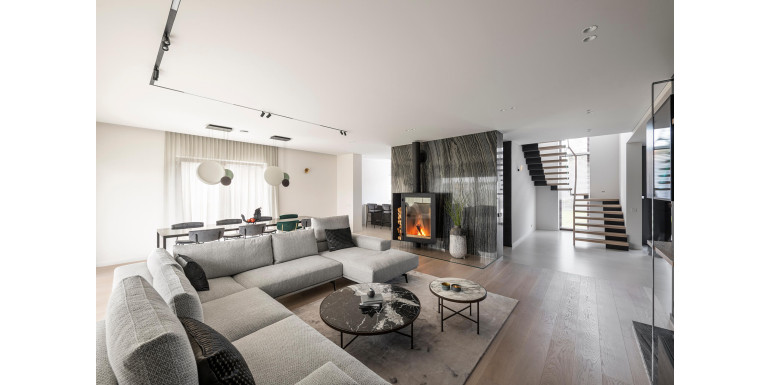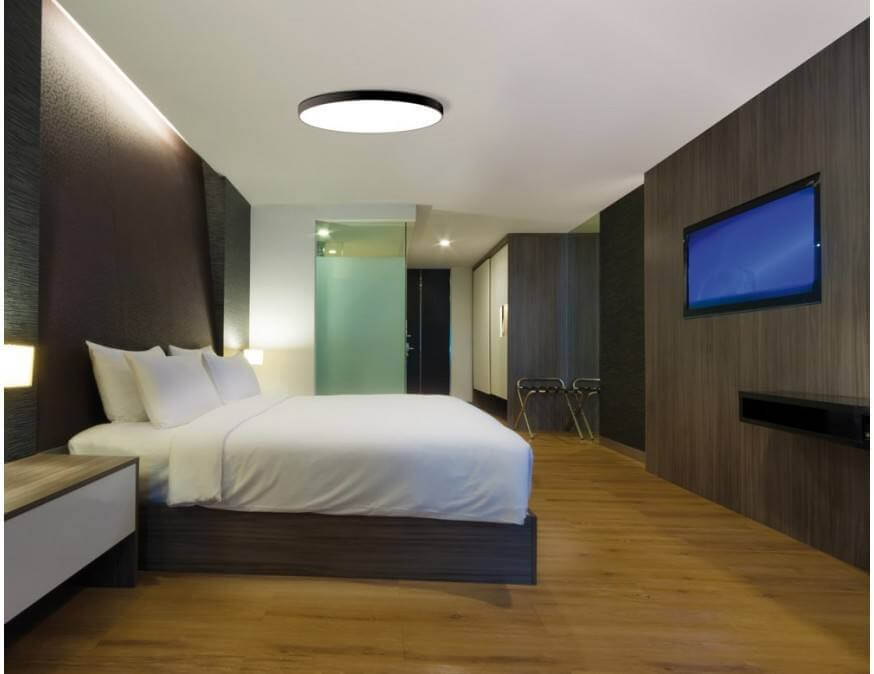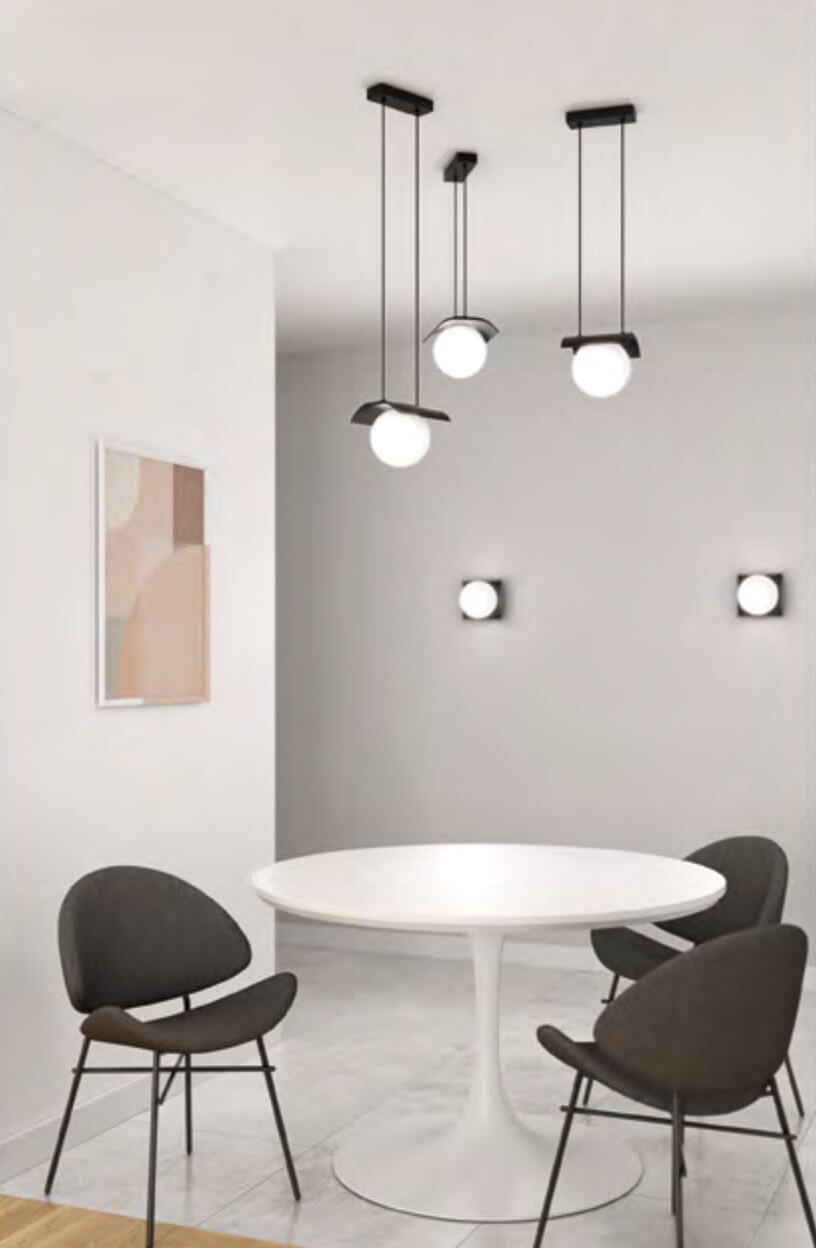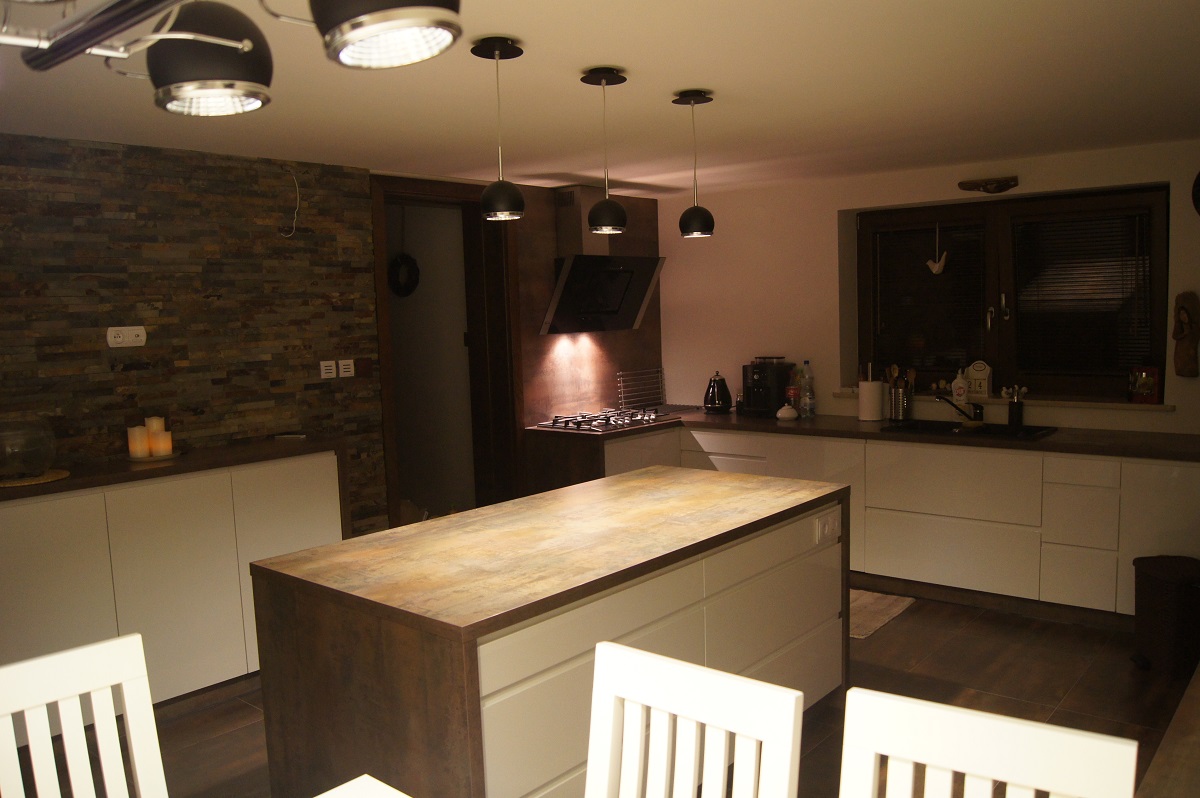-
10 mistakes in Home and Apartment Lighting 01/13/2025 12:25:13How to properly light white interiors? 01/12/2025 19:32:46LED Lighting Trends for 2025 12/24/2024 08:21:12Diffused light - where to use it?10/20/2023 09:30:01

Diffused light - where to use it?
Home lamps can distribute light in two ways - in a focused and diffused form. Very often, their users make the mistaken assumption that only one type of lighting should be chosen in a given room. The truth, however, is slightly different. Both of these forms of light play key roles in creating a comfortable and functional living space. Importantly, however, luminaires that focus light have a different function than those that disperse it. It is therefore worth knowing that choosing the perfect lighting does not end with the decision where to place the lamp. It is a whole art of planning that forces users to reflect more deeply on what light - diffused or focused - best serves a specific room.
What light parameters should you pay attention to?
When buying a lamp, you can find various types of markings on the packaging. Some of them are easy to decipher, while others require some technical knowledge. When a lamp is equipped with an attached bulb or is based on LED technology, additional markings regarding the emitted light appear on the product packaging.
Key parameters include the light color defined as the color temperature in Kelvin, the angle of light distribution, the luminous flux in lumens, the type of thread and the IP protection class, which indicates the water resistance of the lamp. Although at first glance there is no direct information about whether the generated light will be focused or diffused, knowledge of the above parameters allows you to make such an assessment before installing the luminaire.
Focused light and diffused light - light distribution angle
The light distribution angle is a key element that allows you to assess how light is distributed by the luminaire or bulb. Diffused light illuminates a wide surface, while focused light focuses on a limited area. It can be assumed that light becomes more dispersed with increasing light distribution angle.
The shape of the bulb and lampshade also affects the dispersion of light. Classic LED bulb or globe shapes emit light in a diffuse way. Most lamps used for general lighting, such as pendant lamps, chandeliers or ceiling lamps, diffuse light. However, most spotlights and lamps with elongated lampshades that are open on only one side provide more focused light.
Although the intensity and luminous flux are parameters related to the concentration of light, a higher number of lux indicates a greater concentration of light in a selected area. However, the luminous flux or the light intensity of the bulb itself does not provide full information about the nature of light distribution.
Where does diffused light lighting work?
Diffused light in the home is ideal as the main lighting for various spaces. It perfectly illuminates every corner, eliminating unwanted shadows and darker areas in the interior. Lamps that emit light in this way are particularly beneficial in smaller rooms, which can be optically enlarged thanks to them, and additionally allow you to cover small defects, such as uneven walls. The introduction of diffused light as the dominant source of lighting in each room contributes to the creation of a space conducive to relaxation and rest.

How to create diffused lighting?
Although it is rarely necessary to diffuse artificial light in everyday use, because many available fixtures already emit it, it is important for photographers, for example. For them, proper lighting, especially on very sunny days, is crucial. Overly focused light can emphasize unwanted details or interfere with the creation of different shots. Although some imperfections can be corrected during photo editing, in photography and film practice, diffuser planes or softboxes are often used.
They help to diffuse light, thus reducing previously created contrasts. The adjustment of the dispersion is done by changing the distance of the plane from the light source or adjusting the size of the diffuser surface. The diffuser material used is set at the right angle to the photographed object to minimize contrasts and avoid reflection of light into the lens.
For those who have lamps with transparent glass shades in their homes and think that they emit too harsh light, there is a simple way to diffuse it. Just replace the lampshade with a semi-transparent or milky one, which will allow for a delicate dispersion of light. Thanks to this, you can also achieve the effect of a cozy room in which specific zones are not overly exposed.

Can diffused light be turned into focused light?
The lower the light intensity and the more it is diffused, the less distinct various objects within its range become, and their contours blur. This type of light can interfere with reading or studying, among other things, so using focused light is a better solution. Interestingly, a large group of people can create focused light on their own, instinctively. How is this possible?
Just imagine that you have a lamp whose height is adjustable. While reading a book, some people have the impression that the letters are blurring and fatigue, weariness and headaches appear. What happens in such a situation? Many people decide to lower the height of the lamp, which causes the greatest amount of light to fall on a smaller area and in this way the light becomes more focused.
To obtain more focused light, it is worth considering replacing the bulb with a model with a smaller beam angle. To obtain a focused lighting effect, round, traditional bulbs are not a good solution. Instead, it is best to choose bulbs with a beam angle of less than 100°. Alternatively, without having to replace the bulb, you can also use a lampshade with a narrower shape and a greater degree of coverage.
Combining diffused and focused light sources as an optimal solution
Combining diffused and focused light allows you to create harmonious light compositions. Thanks to this combination of lighting, you can simultaneously create a cozy atmosphere at home and fully use the possibilities of a given room. Combining different light sources also allows you to adjust the mood in the room to current needs, creating a brighter environment for various activities or, on the contrary, a more subdued and relaxing one. In our store's offer, you will find a wide range of products that will allow you to create a coherent arrangement using both types of light. We invite you to familiarize yourself with our assortment.
Menu
- +Outdoor lighting
- +Indoor lighting
- Living room
- Bedroom
- Dining room
- LED bathroom lighting
- LED kitchen lighting
- LED stairs lighting
- +LED bulbs
- All manufacturers
- Prices drop
- New Products
- Bestseller





